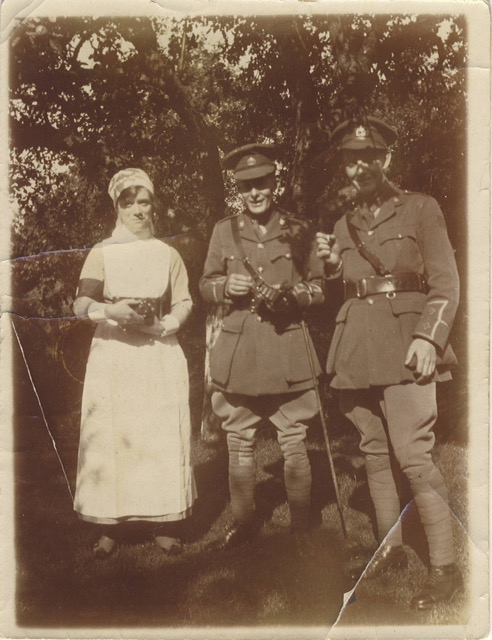Telling the Untold by Dieter Buse

When Graeme Mount and I researched and wrote Come on Over: Northeastern Ontario we discovered that our area had many local cenotaphs listing hundreds of soldiers who had served.
Yet, somehow Northeastern Ontario received no mention in Canadian military histories. We wondered why, given the attention to local participants in Canada’s various wars on Remembrance Days. In 2014 we decided to research the subject and put together a book, Untold: Northeastern Ontario’s Military History, Volumes I and II, showing the participation from this region. We knew so little then and were surprised at how much we found.
As a wise man said “dig where you stand”, so we started with the public library. In Sudbury we found lists of individuals who had served compiled by librarians, Legions, and school groups. In Sault Ste. Marie we found hints at the structure of the military in anniversary booklets and memoirs from POWs. In Timmins the archivist allowed us to go through original newspapers. Soon we knew two things, the region had a much longer military tradition than anyone had noted due to the militias that had units over most of the northeast for all the 20th century. Further, we found that the men from northeastern Ontario were recruited in local battalions but then put into those identified with south, central and eastern Ontario.
We next tried to find the lists of men or nominal rolls of the original battalions to let us answer basic questions, such as who were the men that enlisted and where did they fight or when? Most important were the service and medical files held in Ottawa. Summaries of the enlistment files for the First World War had been digitalized and the complete files were being done when we started and all are now available via the Internet. The summaries of the deceased of the Second World War had also been digitalized.
Then we learned a trick: if we did not go to the Library and Archives Canada website, but to the Ancestry genealogical site for the service files, we could manipulate the data. We could ask for a list of all soldiers who had served from specific places by birthplace or who had lived there. That way we found who served and died from, say Moose Factory or Timmins or Algoma and Nipissing districts. Another trick was to use the registration number after or before the one we already had, say a soldier from Chapleau or Massey. Suddenly we discovered how many Indigenous served and seemed to have enlisted together. With that information, a careful look let us see patterns of when recruited, where placed and when died. The individual medical files revealed special cases and by coordinating with dates of battles we knew where they served on the front. Hence our books have sections on Indigenous, Francophones, Forestry Corps, Railway Troops and Tunnelers.
War diaries of units, personal memoirs, and newspapers all provided stories and soon our collection of information grew into a mass that needed structure and organization. Instead of the usual chronological approach, we decided our study would have more impact if we did it in three parts. The first, is the wars which shows that Northeasterners participated, contributed and sacrificed in all the major Canadian battles. The second, is their experiences, demonstrating the interesting stories which emerged on the battle and home fronts. The third is remembrance, showing the special aspects of commemoration in this area.
While putting together the books we went to legions, asked media to announce our project and started asking for more stories by revealing some of what we had collected to date about POWS, women’s roles, special units in which Northeasterners were represented. Writing, reorganizing, discussing what to emphasize, following hints on good materials. What was most interesting is family members digging out old diaries, newspaper articles, service records and photographs that helped us tell the untold stories of those who served in the military.
These books finally highlight the contributions made by men and women from northeastern Ontario to military service.




